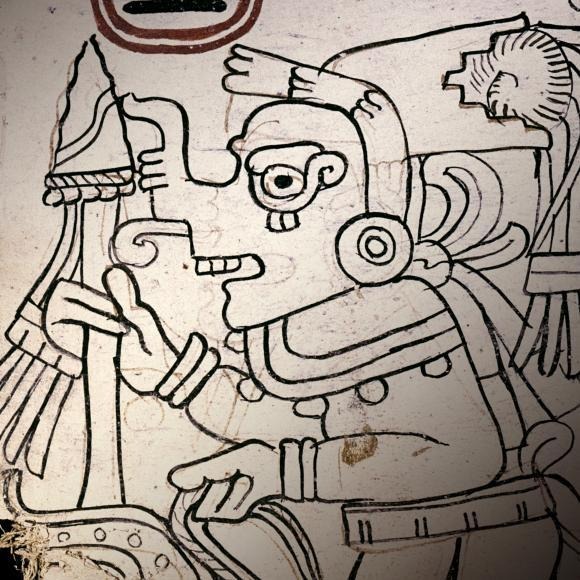Grolier Codex, An Extremely Rare Ancient Maya Book, Is Genuine
In the 1960s, what is said to be one of the rarest books in the world was discovered: an ancient Maya book called the Grolier Codex. While the physical book itself — meaning the actual pages — were quickly dated back to the 13th century, researchers have long speculated that the drawings contained in the book were forgeries, something sellers would have made to try and get more money for the product. That's not true, it turns out. Researchers with Brown University have announced that the Grolier Codex is genuine in every way, making it the oldest known manuscript found in America.
The Grolier Codex was found in a Chiapas, Mexico cave alongside half a dozen other items, at least according to the story recorded in history. The other items included a sacrificial knife with a fist-shaped handle, a small wooden mask, and some other things. All those items have also been proven authentic.
However, it was looters who made the discovery, and that raised suspicion in the archaeological field, a suspicion that has long persisted among some professionals. It didn't help that the man who bought the book, Mexican collector Josue Saenz, told a tale that sounded like something out a movie, recounting how a pair of looters took him by plane to an unknown place near Tortuguero, Mexico to view the items.
Saenz also raised questions when he decided to ship the manuscript off to the Grolier Club in NYC in 1971, a private club and the book's namesake. Finally, researchers say speculation was further fueled by the codex's unusual arrangement, featuring more illustrations than anything else as well as some other differences compared to three previously authenticated codices.

Researchers decided to solve the mystery once and for all. The work was done by Brown University's Stephen Houston, team lead and Yale professor Michael Coe, Mary Miller from Yale, and the University of California-Riverside's Karl Taube.
Together, the team looked at all sorts of things related to the manuscript, as well as the manuscript itself, including its Venus tables' meanings, the nature of those tables, the iconography and styles featured in the book, the craftsmanship, and carbon dating to help determine it authenticity. According to carbon dating, the Grolier Codex predates the Paris, Dresden, and Madrid codices.
Among the things that convinced the researchers about the codex's authenticity is that the forgers would have had to know about certain deities — including how to draw them — that hadn't yet been discovered when the codex was sold. They would also have had to figure out the exact composition of "Maya blue" ink and used it, though scientists hadn't determined the composition until the 1980s.
That's all quite exciting, and leads to the big question: what does the Grolier contain? The answer is 10 painted pages featuring iconography from the Maya culture and charts tracking Venus as it moved through the sky.
The Venus calendars were of utmost importance to ancient Mayans, being used to determine which gods and rituals were to be the current focus. The book focuses on images, hence the high level of imagery contained within; the manuscript covers a span of 104 years, and includes predictions about where Venus should have been even if it wouldn't have been visible some days due to weather.
According to the researchers, the manuscript would have served priests and other relevant individuals for three or more generations.
SOURCE: Brown University
